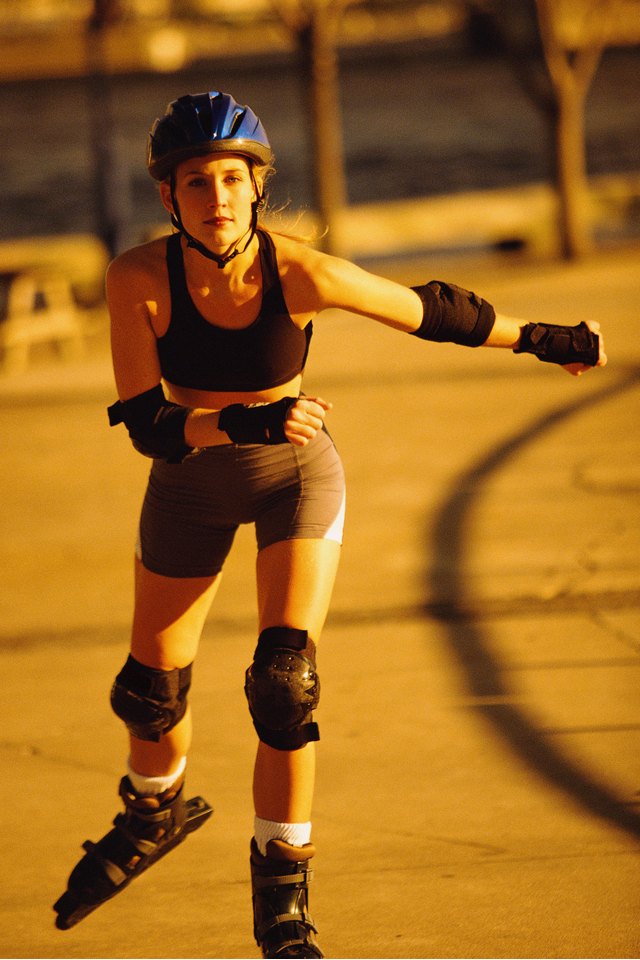Importance of Knee Pads

The knee has little protection on its own, with only a thin layer of skin and muscle over the kneecap, or patella. If you fall on your knee when it's bent, there's not much cushion there to keep you from breaking the patella bone or pushing it out of place, often tearing ligaments or muscles in the process. Using knee pads during certain exercises and sports can help reduce your chance of knee injury.
Types of Knee Pads
Knee pads come in a variety of options designed to help you in different ways. If you experience sharp blows on your knees, such as falling off a skateboard, you need a knee pad with a hard front shell backed by firm padding. If you need more flexibility and extra padding, such as a wrestler who kneels when pinning an opponent on a mat, use a soft, thick pad on the front. Some knee pads slide up over the knee with a stretchy, supportive back sleeve, while others have two straps that wrap around your leg above and below the knee, leaving the back of the knee exposed.
Injury Reduction
Any sport or exercise that requires you to press your knee to the floor -- such as deep lunges -- or to fall forward on your knees, such as diving for a volleyball, can cause a knee injury. Knee pads can keep you from damaging your patella and the surrounding muscles and ligaments when skating and biking or playing such sports as hockey and football. According to a 1996 study published in the "New England Journal of Medicine" entitled "Risk Factors for Injuries from In-line Skating and the Effectiveness of Safety Gear," failure to use knee pads was responsible for 32 percent of knee injuries. As reported in the "American Journal of Epidemiology," a 2005 study of nearly 20,000 student sport seasons revealed a 56 percent decrease in knee injuries in students who wore knee pads in sports such as cheerleading, basketball and softball.
Knee Support
Knee pads can offer support to your knees, reducing the chance of overextending the knees or having the knee collapse while exercising. Hard- or soft-front knee pads that include a stretchy sleeve that slides over the leg and covers the back of the knee provide support to the knee muscles and ligaments while protecting the patella. They connect your thigh muscles to your calf muscles on the sides and back of the knee, helping to prevent the knee from hyperextending during strenuous activity.
Increased Performance
Athletes can be understandably hesitant to perform at full capacity without protective knee pads. In volleyball, for example, diving to your knees to hit a low ball is standard. However, the hard floor of indoor courts can damage your knees if you hit them with your full body weight at full speed without knee pads. Knee pads give you the confidence to try the new in-line skate move, wrestling technique or football play without worrying about knee damage. Knee pads can't protect you from all knee injuries, so check with a doctor, your coach or a personal trainer to ensure that you understand the proper form of new techniques before attempting them.
References
- Durango Orthopedics: What Hurts? - Knee Happiness
- American Academy of Pediatrics: In-line Skating Injuries in Children and Adolescents
- Bastyr Center for Natural Health: Prevent Knee Injuries in High School Athletes
- Centers for Disease Control and Prevention: Body and Mind: Volleyball Activity Card
- New England Journal of Medicine: Risk Factors for Injuries from In-line Skating and the Effectiveness of Safety Gear
Resources
